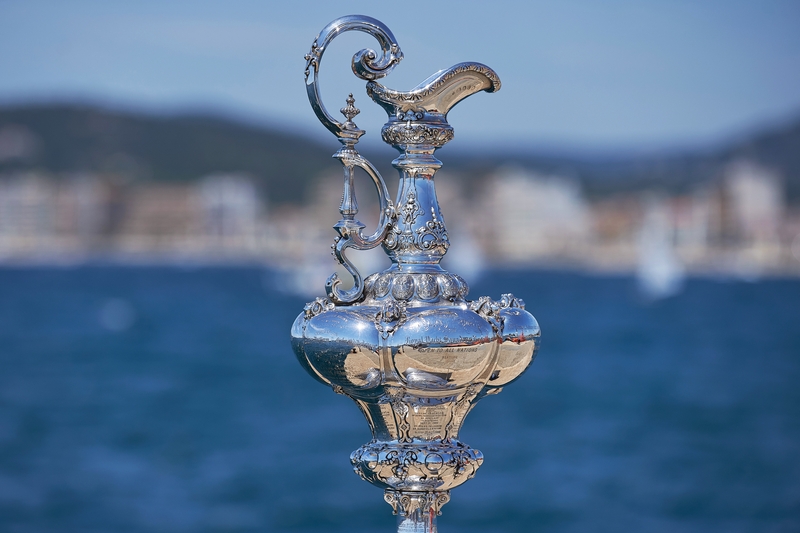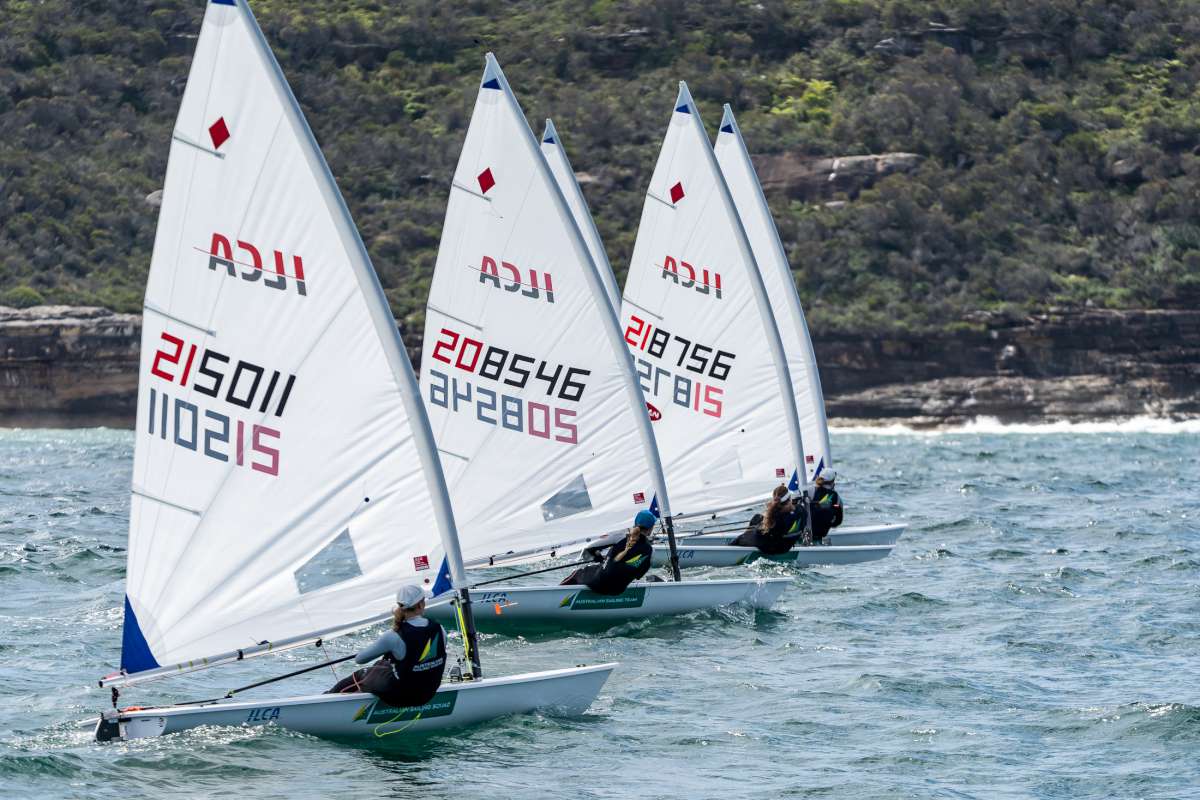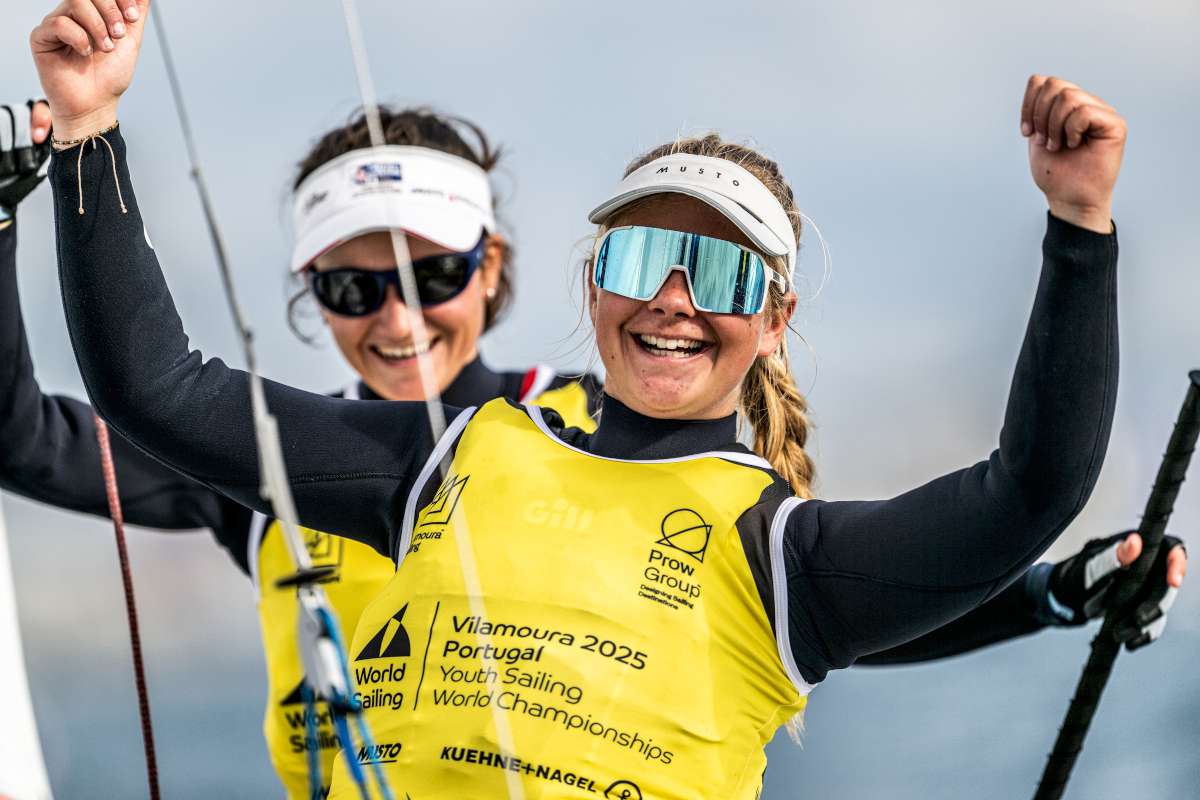Destination: Queensland
Jill Knight explores Curtis Island's Yellowpatch, a dramatic sand-blow-coloured orchre south of Queensland's Keppel Islands.
Just as there are fashions in après-sail wear, I think there may be fashions in anchorages. When my brother regularly cruised the Queensland coast in the 1970s and 80s, I had the impression that few boats crossed the TroThe name refers to a dramatic yellow patch of sand. The sandbanks that shelter the anchorage below the face are white; the sand in the valley behind that runs through to the ocean beach is white. And yet this mountain of sand is a pure and lovely yellow. The anchorage lies inside the estuary of a creek flowing north through Curtis Island and entering the sea just inside Cape Capricorn, right on the TroIt may be that in the days before multihulls and reliance on auxiliary engines most cruising boats took the open sea route outside Curtis Island rather than braving the more sheltered but very shallow Narrows that separate the island from the mainland north of Gladstone. On the outside track, Yellowpatch is a natural stop between Pancake Creek and Great Keppel Island. Whatever the reason, this spot seems to be neglected by today's cruising population.

Cooee lies at anchor against the yellow splendour.
First visit
Like many others, I had never been to Yellowpatch and neither had Jim, the cruising mate I am pleased to hook up with whenever our paths cross. We had both decided to spend summer in the Keppels and resolved to do a bit more exploring of the local area than we had on previous long stays. Yellowpatch was top of both our lists. We set sail early from Great Keppel on an easterly that was expected to veer northeast, and hoped to reach the shallows off the entrance with a couple of hours to spare before the flood tide peaked. Charts showed the channel into the anchorage to be poorly defined and constantly on the move, and while we had been given recent GPS waypoints and been told that local fishermen maintained a number of channel marker buoys, on this first visit we wanted good visibility too. Strong southeasters and rain were forecast to arrive within 24 hours so the day offered a window we did not want to miss.
The easterly remained steadfastly east, but with a little help from the motor Cooee sailed past Hummocky Island and arrived at the entrance to Yellowpatch in good time.

White floats mark the port side of the entrance channel.
The closest buoy is the final one and marks the
dogleg towards the rocky shore to avoid
the sandbanks to the south from which the
photo is taken. Hummocky Island lies
north of the entrance.
Pair of buoys
All was as it had been described to us: a pair of buoys marked the entry point and four more marked the port side of the channel, the final one making a dogleg to port from whence I was on my own. A rocky shore on the eastern side of the creek entrance was the next guide and I steered for this, careful not to stray too far south onto sandbanks I could see to starboard. Unexpectedly, this was the shallowest part of the channel. I zigzagged looking for deeper water but concluded that the depths across this stretch were pretty uniform; in any case, they were easily sufficient for the average monohull of two metres or so draft to enter with tidal assistance.
There was deep water off the rocky shore, and it became progressively shallower as Cooee approached the dramatic rise of bright gold sand. I anchored close in under its slope but learned later that there are advantages to stopping a little sooner off the bushy curve of beach between the rocky shore and the sand. And advantages, also, in leaving some distance between boat and shore. There is no great breadth of deep water between the shore and drying sandbanks, however, and on windless days, particularly after rain, sandflies and mosquitos are easily able to manage the distance.
Jim missed the tide and since the wind was still light from the east found a comfortable anchorage outside under Cape Capricorn. He was to spend another two days there while a strong southeasterly blew and clouds and pouring rain made negotiating the channel an unattractive prospect. Meanwhile, snug inside, I was gathering observations on this new destination. A big cat anchored off the curve of beach was clearly feeling less of the wind's force than was Cooee in her spot against the yellow splendour. The water was flat throughout the estuary so I thought little of this until I noticed a yellow tinge to the decks.
The sand coated everything. It was clean and pretty and did not bother me sufficiently for me to consider moving, but when the southeaster blows this is not the spot for dismantling machinery or touching up the varnish.

Jim's Prosper lies closer to the curving beach than Cooee. This shows the channel curving past the big
cat, which is out of sight on the right, along the rocky shore and across to the line of buoys.
Serious exploring
Jim finally arrived and we began some serious exploring. At low tide the rumpled sandbanks stretched for miles and made for fascinating walks. Little coiled volcanoes of sand rose up as the water retreated, the faecal output of acorn worms amazingly busy below the surface. Small fan-tailed lobsters were common too, unhappily stranded by the distant sea. On the shore, every morning revealed a new collection of animal prints crisscrossing the sand: hopping marsupials, crawling goannas and snakes, wild pigs and dogs. Spiders and ant-lions lurked in wait for smaller prey. Noel Patrick's cruising guide shows fresh water on the shore, and we found a covered well in the bush behind the catamaran's beach. Some paperbark lowlands looked as though they were sometimes wet, and clearly the area had enough water to support a good animal population. The shore is national park but the water in the anchorage area is a yellow zone on the Marine Park zoning plan; this means there are no fishing restrictions that would worry the cruising yachtie. Flathead, whiting and dart graced our plates during our stay. The estuary is popular with recreational fishermen, and a few small local boats were usually around during the day.
Toboggan heaven
In the two weeks Cooee lay under the marvellous yellow slope, I saw every kind of improvised toboggan called into service in hopes of a thrilling ride down that irresistible incline. Surf- and windsurfer boards with their fins were the poorest vehicles. Boogie boards and bits of cardboard were okay, but nothing seemed able to overcome the friction of the sand and fulfil the rider's dreams of speed. Given the almost 90 degree angle of the beach at the bottom, this is probably fortunate for the local spinal unit.
Jim and I mostly descended on our bottoms using driftwood sticks as ski-poles, and this seemed to work as well as anything. During those two weeks we had winds from the south, east and northern sectors and the anchorage was always comfortable. If the northerlies and northwesters had been stronger there would have been some discomfort for a few hours around the time of high tide, but I think a boat could almost always find safe shelter here despite that discomfort. Smaller, shallow-draught vessels could continue along the channel to the southwest and find even better shelter, but depths and swinging room were limited down there at the time of our visit.
Big trek
Once Jim and I had covered the territory inside the estuary and ventured along the northern shore to the Cape Capricorn lighthouse, we decided it was time for the big trek along the valley to the ocean beach to the east. Friends had described it as a daunting expedition, rarely attempted, so we packed water and lunch and set off early. It was a lovely walk through forest, with a ridge on each side making it impossible to become disoriented. We noted the positions of a few prickly pear bushes heavy with fruit; fresh provisions were getting low and we planned to.
Meaning of life
One evening, at the end of another magic day of exploring, I was having sundowners with the owners of the big cat and two men off another multi that had sailed in that day. Conversation nibbled around to the meaning of life.
“But what do you do now?” the visiting cat's owner said. He meant: “What's the point now I've done well, had the children, retired early, love my wife (but she has better things to do than go sailing), own the nice boat?”

A stormy dawn in a calm anchorage is a lovely thing.
I looked across our lapping dinghies and out over the dark stillness of water crammed with reflected stars. I thought how brave if was of him to say such a thing in cruising company. Pretty brave to allow himself to think it. The ghostly slant of sand was made pale and vast in the moonlight, and Cooee's sweet silhouette lay against its base. There seemed to be so much to say that I could think of no reply.

























